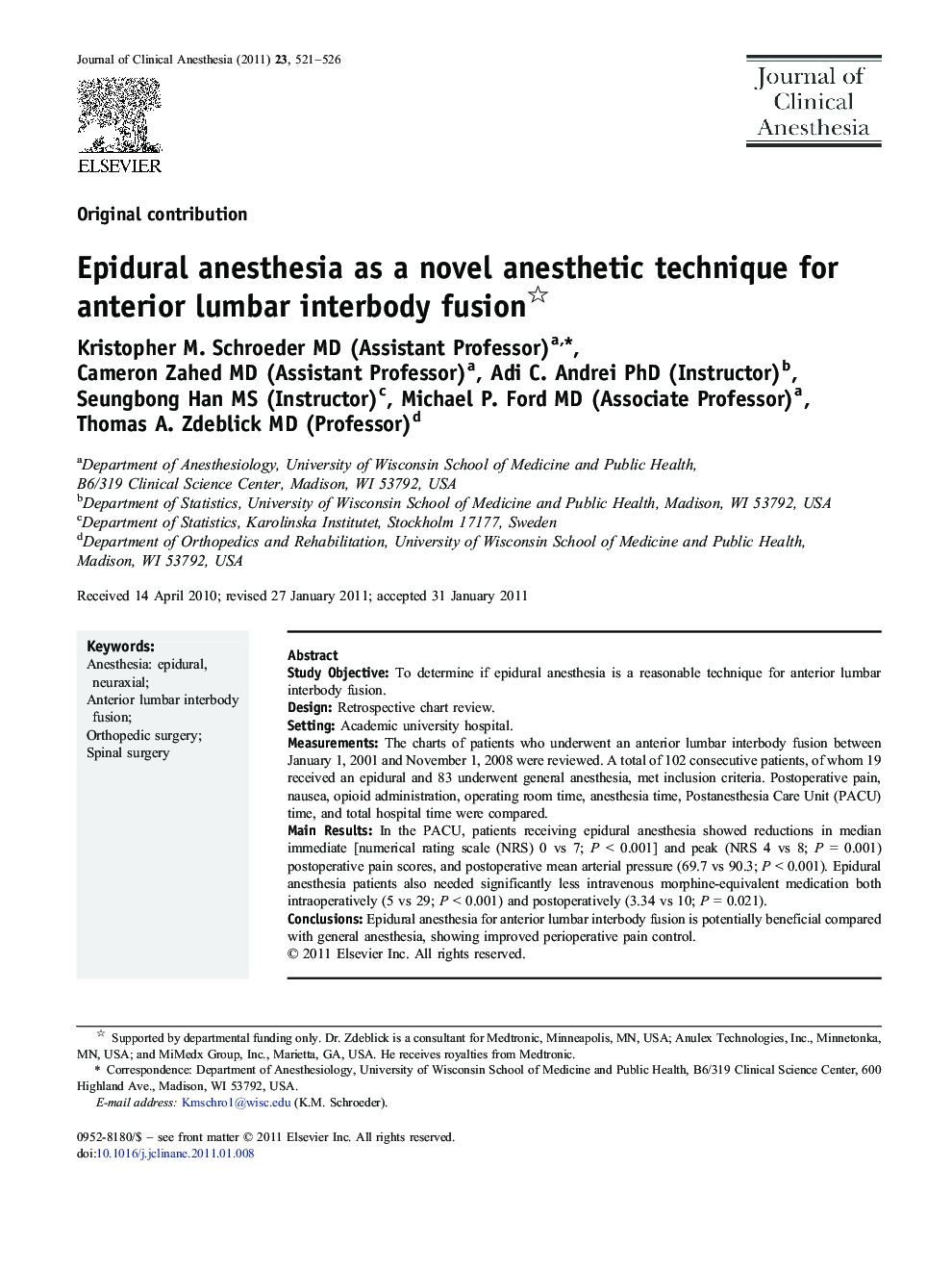| Article ID | Journal | Published Year | Pages | File Type |
|---|---|---|---|---|
| 2763226 | Journal of Clinical Anesthesia | 2011 | 6 Pages |
Study ObjectiveTo determine if epidural anesthesia is a reasonable technique for anterior lumbar interbody fusion.DesignRetrospective chart review.SettingAcademic university hospital.MeasurementsThe charts of patients who underwent an anterior lumbar interbody fusion between January 1, 2001 and November 1, 2008 were reviewed. A total of 102 consecutive patients, of whom 19 received an epidural and 83 underwent general anesthesia, met inclusion criteria. Postoperative pain, nausea, opioid administration, operating room time, anesthesia time, Postanesthesia Care Unit (PACU) time, and total hospital time were compared.Main ResultsIn the PACU, patients receiving epidural anesthesia showed reductions in median immediate [numerical rating scale (NRS) 0 vs 7; P < 0.001] and peak (NRS 4 vs 8; P = 0.001) postoperative pain scores, and postoperative mean arterial pressure (69.7 vs 90.3; P < 0.001). Epidural anesthesia patients also needed significantly less intravenous morphine-equivalent medication both intraoperatively (5 vs 29; P < 0.001) and postoperatively (3.34 vs 10; P = 0.021).ConclusionsEpidural anesthesia for anterior lumbar interbody fusion is potentially beneficial compared with general anesthesia, showing improved perioperative pain control.
